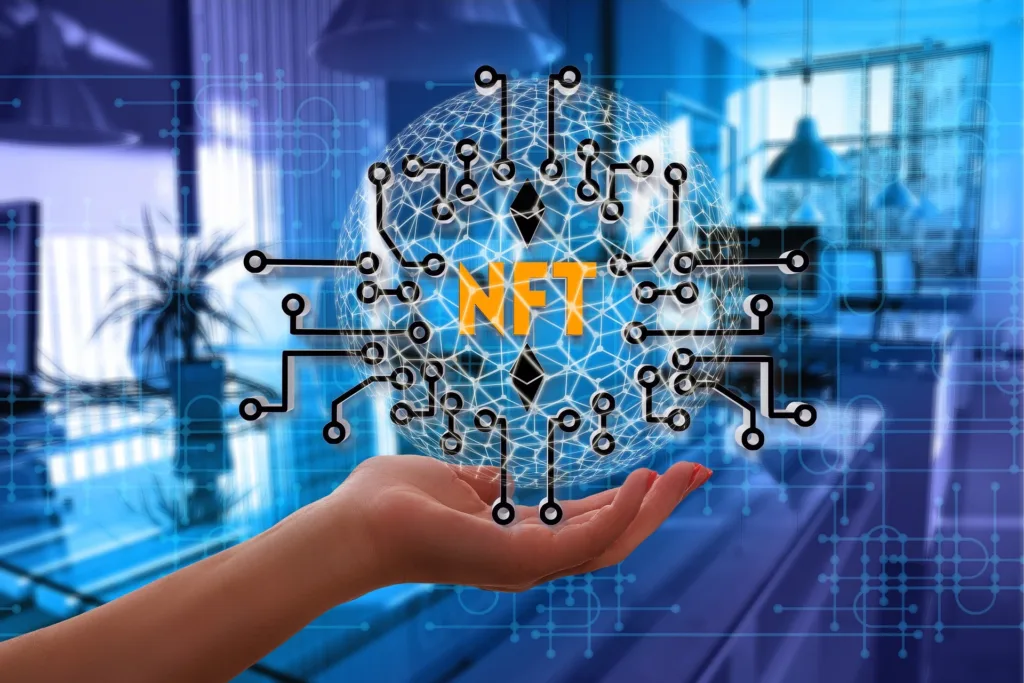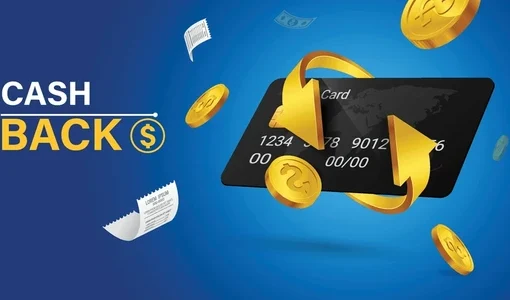
Table of Contents
Introduction to NFTs
In recent years, the world of digital assets has witnessed a revolutionary concept known as Non-Fungible Tokens, or NFTs. These unique digital tokens have gained immense popularity and have paved the way for new opportunities in various industries. NFTs represent ownership of a specific item or piece of content on the blockchain, making them one-of-a-kind and not interchangeable like cryptocurrencies.
At its core, a Non-Fungible Token is a unit of data stored on a blockchain that certifies a digital asset to be one-of-a-kind. Unlike cryptocurrencies such as Bitcoin or Ethereum, which are interchangeable with one another and have equal value, NFTs are unique and cannot be exchanged on a one-to-one basis. Each NFT possesses distinct attributes that set it apart from all others, creating a sense of scarcity and uniqueness.
History of Non-Fungible Tokens (NFTs)
A Brief History of Non-Fungible Tokens (NFTs)
NFTs, or Non-Fungible Tokens, have rapidly emerged as a revolutionary force in the digital world, offering unique ownership and authentication of digital assets on the blockchain. The concept of NFTs can be traced back to the early days of blockchain technology and has since evolved, impacting various industries and capturing the attention of artists, collectors, and investors worldwide.
The journey of NFTs began with the introduction of the Bitcoin blockchain, the first and most renowned cryptocurrency. Although Bitcoin itself is fungible, meaning each unit is interchangeable with another of the same value, it laid the groundwork for the idea of tokenization on a blockchain.
The real breakthrough for NFTs came in 2015 with the launch of Ethereum. Ethereum introduced smart contracts, self-executing agreements with predefined rules, enabling developers to create custom tokens on the blockchain. This marked the transition from simple cryptocurrency transactions to the creation of unique, non-interchangeable digital assets.
In 2017, the world witnessed the explosion of NFTs into the mainstream with the advent of CryptoKitties. The blockchain-based game allowed users to collect, breed, and trade virtual cats as NFTs on the Ethereum blockchain. Each CryptoKitty was represented by a distinct NFT, sparking immense interest and clogging the Ethereum network due to its popularity. CryptoKitties served as a pivotal moment, showcasing the potential of NFTs for gaming and digital collectibles.
Following the success of CryptoKitties, several other projects explored the diverse applications of NFTs across various industries. Decentraland, for instance, introduced a virtual reality platform where users could buy, sell, and develop virtual land as NFTs, offering a glimpse into the potential of NFT-based virtual real estate.
Artists and creators also embraced NFTs as platforms like SuperRare and KnownOrigin emerged, enabling artists to tokenize and sell their artwork directly to collectors. NFTs opened up new avenues for artists to showcase and monetize their creations without intermediaries.
The years 2020 and 2021 witnessed a significant surge in NFT interest and adoption. High-profile sales, celebrity endorsements, and partnerships with renowned artists propelled NFTs further into the spotlight. The sale of “Everydays: The First 5000 Days” by artist Beeple for a staggering sum exemplified the growing value and significance of NFTs in the art world.
Beyond art and gaming, NFTs expanded into diverse industries such as music, sports, virtual real estate, and collectibles. Musicians began releasing limited-edition albums and concert tickets as NFTs, while sports organizations issued NFTs to commemorate iconic moments and engage fans on a deeper level.
Amid the rapid growth of the NFT market, challenges emerged, including concerns about the environmental impact of blockchain transactions. The industry has responded with initiatives and alternative blockchains to address these sustainability concerns.
As of the present, the NFT landscape continues to evolve. Innovations in scalability, interoperability, and enhanced NFT standards are actively reshaping the ecosystem. The future of NFTs holds exciting possibilities as they continue to disrupt traditional industries, empower creators, and redefine digital ownership and experiences.
In conclusion, the history of NFTs showcases the transformative power of blockchain technology, enabling the creation and exchange of unique digital assets. From their modest origins to global prominence, NFTs have revolutionized the way we perceive, value, and interact with digital content, promising a fascinating journey of further innovation and advancement.
In Summary,
- 2012-2017: Colored Coins on Bitcoin laid groundwork for tokenizing assets.
- 2015: Ethereum introduced smart contracts, enabling unique tokens.
- 2017: CryptoKitties popularized NFTs for gaming and collectibles.
- 2018-2019: Projects like Decentraland and SuperRare explored NFT applications.
- 2020-2021: NFTs gained traction with high-profile sales and celebrity involvement.
- Present: NFTs expanded to art, music, sports, and real estate industries.
- Challenges: Environmental impact addressed through sustainable solutions.
- Future: Ongoing evolution, reshaping digital ownership and experiences.
Understanding NFTs: Non-Fungible Tokens Explained
Definition of NFTs
NFTs are digital assets that utilize blockchain technology to verify their authenticity, provenance, and ownership. Each NFT possesses a distinct value and cannot be replicated, making it different from cryptocurrencies like Bitcoin or Ethereum, which are fungible and interchangeable.
How NFTs Work
NFTs are created using smart contracts on blockchain platforms like Ethereum. These smart contracts contain unique information about the digital item they represent. Artists, creators, or individuals can mint NFTs to represent their artwork, music, videos, virtual real estate, and more.
Advantages of NFTs
The emergence of NFTs has brought several benefits to artists and creators. They enable direct engagement with their audience, more control over their work, and the ability to earn royalties from subsequent sales. NFTs have also allowed content creators to reach a broader global market without intermediaries.
How Is an NFT Different from Cryptocurrency?
Cryptocurrencies and Non-Fungible Tokens (NFTs) are both digital assets that utilize blockchain technology, but they serve different purposes and have distinct characteristics. Let’s explore the key differences between NFTs and cryptocurrencies.
1. Fungibility vs. Uniqueness
The primary difference between NFTs and cryptocurrencies lies in their fungibility. Cryptocurrencies like Bitcoin and Ethereum are fungible, meaning each unit of the currency is interchangeable with another of the same value. For example, one Bitcoin can be exchanged for another Bitcoin without any difference in value.
On the other hand, NFTs are non-fungible, which means each token is unique and cannot be exchanged on a one-to-one basis with another NFT. Each NFT represents a specific asset or piece of content, such as digital art, collectibles, music, virtual real estate, and more, making them one-of-a-kind.
2. Representation of Value
Cryptocurrencies are primarily used as a medium of exchange and store of value. They represent a unit of value and can be used for transactions, investments, or as a means of transferring funds globally. The value of a cryptocurrency is determined by market demand and supply dynamics.
On the other hand, NFTs represent ownership of a specific asset or content on the blockchain. They are more like digital certificates of authenticity, proving the uniqueness and ownership of a particular item. The value of an NFT is often tied to the significance of the underlying asset, the reputation of the creator, and the demand among collectors and enthusiasts.
3. Use Cases
Cryptocurrencies are widely used for various purposes, including online purchases, cross-border remittances, investment, and trading on cryptocurrency exchanges. They have also gained popularity as a hedge against inflation and traditional financial systems.
NFTs, on the other hand, have unique and diverse use cases. They have become especially prominent in the fields of digital art, gaming, music, virtual real estate, and collectibles. NFTs enable artists and creators to tokenize their work and sell it directly to collectors, providing new avenues for monetization and fan engagement.
4. Interoperability
Cryptocurrencies are generally interchangeable across different wallets and platforms. For instance, if you have Bitcoin in one wallet, you can easily transfer it to another wallet or use it on various cryptocurrency exchanges.
NFTs, however, can have limitations in terms of interoperability. While some NFTs are ERC-721 tokens on the Ethereum blockchain, which ensures a certain level of compatibility, others may use different standards and blockchains. This can sometimes create challenges when trying to move NFTs between different platforms or marketplaces.
5. Smart Contracts
Both cryptocurrencies and NFTs rely on smart contracts, which are self-executing contracts with predefined rules written into the blockchain code. These smart contracts facilitate transactions and interactions between users in a trustless and transparent manner.
However, NFTs often have more complex smart contracts compared to cryptocurrencies. NFT smart contracts can contain additional information, metadata, and royalty mechanisms, ensuring that creators receive a percentage of future sales whenever the NFT changes hands.
How to Buy NFTs
Non-Fungible Tokens (NFTs) have gained immense popularity, offering a unique and exciting way to own digital assets and content on the blockchain. Buying and selling NFTs involve interacting with blockchain wallets and using cryptocurrencies to make transactions. NFTs can be acquired through auctions, direct purchases, or even trading with other collectors.
If you’re interested in purchasing NFTs and becoming a part of this rapidly evolving space, here’s a step-by-step guide on how to buy NFTs.
Step 1: Set Up a Digital Wallet
The first step in buying NFTs is to set up a digital wallet that supports the blockchain platform where the NFTs you’re interested in are minted and traded. The most common blockchain platform for NFTs is Ethereum, and popular wallets that support Ethereum and other NFT-compatible blockchains include MetaMask, Trust Wallet, and Coinbase Wallet.
Step 2: Fund Your Wallet
Once you have a digital wallet set up, you’ll need to fund it with cryptocurrency. Ethereum (ETH) is the most widely used cryptocurrency for purchasing NFTs. You can obtain ETH by purchasing it from cryptocurrency exchanges or by converting other cryptocurrencies you might already own.
Step 3: Choose an NFT Marketplace
After funding your wallet, the next step is to choose an NFT marketplace where you can browse and buy NFTs. Some popular NFT marketplaces include OpenSea, Rarible, SuperRare, and Foundation. Each marketplace may have its unique collection of NFTs and features, so explore different platforms to find the one that best suits your preferences.
Step 4: Connect Your Wallet to the Marketplace
Once you’ve selected an NFT marketplace, you’ll need to connect your digital wallet to the platform. This connection allows the marketplace to access your wallet’s funds and enables you to make transactions seamlessly. Most NFT marketplaces will prompt you to connect your wallet when you access their website or app.
Step 5: Browse and Select NFTs
With your wallet connected, you can now browse through the NFT collections available on the marketplace. NFTs come in various categories, such as digital art, music, virtual real estate, collectibles, and more. Use the marketplace’s search and filter tools to find NFTs that match your interests and budget.
Step 6: Place a Bid or Buy Instantly
Once you find an NFT you want to purchase, you have two options: placing a bid or buying it instantly. Some NFTs are auctioned, allowing you to place a bid and compete with other buyers. If the auction has a fixed duration, the highest bidder at the end of the auction wins the NFT.
Alternatively, some NFTs have a fixed price, and you can buy them instantly with a single click. If the NFT has this option, you’ll see a “Buy Now” button, and upon clicking it, the NFT will be added to your wallet after the payment is processed.
Step 7: Confirm the Transaction
Before finalizing the purchase, your wallet will prompt you to confirm the transaction. Review the details of the NFT, the price, and any additional fees associated with the transaction. Once you’re satisfied, confirm the transaction, and the NFT will be transferred to your digital wallet.
Step 8: View and Manage Your NFTs
After completing the purchase, you can view and manage your NFTs in your digital wallet. NFTs are stored as digital assets on the blockchain, and your wallet acts as your unique address for accessing and displaying your NFT collection.
Buying NFTs can be an exciting and rewarding experience, allowing you to own unique digital assets and support artists and creators in the process. Remember to do your research, set a budget, and explore different NFT marketplaces to find the NFTs that resonate with you. As with any investment, be mindful of potential risks and fluctuations in the NFT market, and enjoy the journey of discovering and collecting digital art and content on the blockchain.
Popular NFT Marketplaces
Non-Fungible Tokens (NFTs) have taken the digital world by storm, and numerous NFT marketplaces have emerged to facilitate the buying, selling, and trading of these unique digital assets. Each marketplace offers a diverse selection of NFTs across various categories, attracting artists, creators, collectors, and enthusiasts from around the globe. Here’s a detailed look at some of the most popular NFT marketplaces:
1. OpenSea
OpenSea is one of the largest and most well-known NFT marketplaces. It operates on the Ethereum blockchain and supports a wide range of NFTs, including digital art, virtual real estate, collectibles, domain names, and more. Artists and creators can mint their NFTs on OpenSea, and buyers can purchase NFTs through auctions or fixed-price listings. The platform’s user-friendly interface and extensive collection make it a favorite among NFT enthusiasts.
2. Rarible
Rarible is a decentralized NFT marketplace built on the Ethereum blockchain. It allows users to create, buy, and sell NFTs without any coding knowledge. What sets Rarible apart is its unique governance model, where RARI token holders have a say in platform development and decision-making. Rarible’s governance model fosters community engagement and transparency.
3. SuperRare
SuperRare focuses on digital art NFTs and is known for its curation of high-quality, limited-edition artwork. Each NFT on SuperRare is a unique creation, and artists receive royalties from secondary sales, providing them with ongoing incentives. The platform places an emphasis on promoting artists and establishing a strong community of art collectors and enthusiasts.
4. Foundation
Foundation is a creative platform that allows artists and creators to showcase their work as NFTs. The platform is designed to support a diverse range of creative endeavors, including digital art, music, and interactive experiences. Foundation aims to empower artists and provide them with the tools to monetize their creations directly and transparently.
5. Nifty Gateway
Nifty Gateway is a user-friendly NFT marketplace that offers both auction-style and drop-based sales. It collaborates with well-known artists and brands to release exclusive NFT collections, attracting a wide audience of collectors and investors. Nifty Gateway also features a secondary market where users can buy and sell NFTs after the initial drops.
6. Decentraland
Decentraland is more than just an NFT marketplace; it is a virtual reality (VR) platform that operates on the Ethereum blockchain. Users can purchase virtual land as NFTs, build on their properties, and monetize their creations. Decentraland’s combination of NFTs and virtual real estate creates a unique and immersive experience for its community of users.
7. NBA Top Shot
NBA Top Shot, developed by Dapper Labs, is an officially licensed NFT platform that focuses on basketball collectibles. Users can buy and sell officially licensed NBA highlight clips as NFTs. The platform’s association with the National Basketball Association (NBA) and the thrill of owning iconic moments from NBA games have contributed to its immense popularity.
8. Axie Infinity
Axie Infinity is a blockchain-based game that features NFT-based creatures called “Axies.” Players can collect, breed, and battle Axies, and the game’s play-to-earn model allows users to monetize their in-game activities through NFT rewards. Axie Infinity’s gaming elements and earning potential have attracted a vibrant community of players and investors.
The NFT market is continuously evolving, and these popular marketplaces play a crucial role in shaping the digital asset landscape. Each marketplace has its unique features, offerings, and community, providing a wide array of opportunities for artists, collectors, and enthusiasts to engage with NFTs. As the NFT ecosystem continues to grow, it’s essential to explore different platforms, conduct due diligence, and enjoy the experience of discovering and owning unique digital assets on the blockchain.
Should You Buy NFTs?
Whether or not you should buy Non-Fungible Tokens (NFTs) depends on your personal interests, financial situation, and risk tolerance. NFTs have become a popular and exciting investment option, but they come with certain considerations that you should keep in mind before making a decision. Here are some factors to consider when deciding if you should buy NFTs:
1. Understanding NFTs
Before purchasing NFTs, it’s essential to have a clear understanding of what they are and how they work. NFTs are unique digital assets that represent ownership of a specific item or content on the blockchain. They are non-fungible, meaning each token is distinct and cannot be exchanged on a one-to-one basis with another NFT. Educate yourself on the different types of NFTs and their applications, such as digital art, virtual real estate, music, gaming assets, and more.
2. Risk and Volatility
Like any investment, NFTs carry a level of risk and volatility. The value of NFTs can fluctuate significantly based on factors such as market demand, the reputation of the creator, and the perceived uniqueness of the asset. It’s essential to be prepared for potential price fluctuations and only invest an amount that you can afford to lose.
3. Budget and Financial Goals
Consider your financial situation and investment goals before buying NFTs. Evaluate your budget and determine how much you are willing to allocate to NFT investments. It’s crucial to strike a balance between your investment goals and overall financial well-being.
4. Diversification
If you decide to buy NFTs, consider diversifying your portfolio. Investing solely in NFTs can be risky, as the market is relatively new and can be subject to rapid changes. Diversification can help spread risk and provide a more balanced approach to your investment strategy.
5. Personal Interest and Passion
Many people are drawn to NFTs not just as investments but also as a way to support artists and creators they admire. If you are passionate about digital art, gaming, or other NFT categories, owning NFTs can be a way to engage with the content and be part of a thriving community.
6. Long-term vs. Short-term Investment
Consider your investment horizon. Some NFTs may appreciate in value over time, while others may have shorter-term potential. Assess whether you are looking for long-term holds or short-term trading opportunities.
7. Research and Due Diligence
Do your research and due diligence before purchasing NFTs. Explore different NFT marketplaces, verify the authenticity of the NFTs you’re interested in, and be cautious of potential scams or copyright issues. Familiarize yourself with the platform’s fees, transaction costs, and security measures.
Various Uses of NFTs
Digital Art and Collectibles
One of the most well-known applications of NFTs is in the realm of digital art and collectibles. Artists can tokenize their artwork, creating a verifiable and unique representation of their creations. NFT marketplaces have seen astonishing sales of digital art pieces, revolutionizing the art industry and providing new revenue streams for artists.
Gaming and Virtual Real Estate
NFTs have found a significant place in the gaming industry, allowing players to own and trade in-game assets securely. Virtual real estate is another exciting domain where NFTs are used to buy, sell, and develop virtual properties within virtual worlds, generating a thriving virtual real estate market.
Music and Entertainment
Musicians and entertainers have embraced NFTs as a means of releasing exclusive content and experiences to their fans. NFTs enable artists to offer limited edition music albums, concert tickets, and unique backstage experiences, enhancing fan engagement.
Intellectual Property Rights and Royalties
NFTs have introduced new possibilities for managing intellectual property rights and royalties. Creators can embed royalty mechanisms in their NFTs, ensuring that they receive a percentage of future sales whenever their work changes hands.
Identity and Certification
Blockchain-based NFTs can also be used for identity verification and certification purposes. They can securely store credentials, academic certificates, and licenses, creating a tamper-proof record of an individual’s achievements.
Security and Challenges in NFT Marketplaces
While NFTs offer exciting opportunities, the space is not without challenges. Issues related to copyright infringement, plagiarism, and scams have arisen in the NFT ecosystem. Security measures and community-driven initiatives are vital to protect artists and buyers.
Buying NFTs can be an exciting and potentially rewarding venture, but it comes with risks and considerations. If you are intrigued by the concept of NFTs, have a passion for digital content, and are willing to accept the inherent volatility, owning NFTs can be a gratifying experience. However, ensure that you approach NFT investments with a thoughtful and informed mindset, aligning them with your overall financial goals and risk tolerance. As with any investment, exercise caution, and seek advice from financial professionals if needed.
FAQs
What does NFT stand for?
NFT stands for Non-Fungible Token.
Can I create my own NFT?
Yes, you can create your own NFT using various blockchain platforms and marketplaces.
How do NFTs verify authenticity?
NFTs use blockchain technology to provide a transparent and secure record of ownership and provenance.
What is the most expensive NFT ever sold?
The most expensive NFT ever sold is “Everydays: The First 5000 Days” by Beeple, which fetched millions of dollars.
Are NFTs a passing trend or the future?
While some may see NFTs as a passing trend, the underlying technology and its applications indicate that they are here to stay and will continue to shape the digital landscape.
Remember, NFTs offer exciting opportunities, but it’s essential to stay informed and cautious while navigating this evolving space.




One thought on “What Is An NFT? Non-Fungible Tokens Explained”
Thanks for sharing. I read many of your blog posts, cool, your blog is very good.